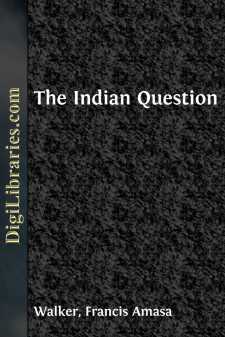Categories
- Antiques & Collectibles 13
- Architecture 36
- Art 48
- Bibles 22
- Biography & Autobiography 813
- Body, Mind & Spirit 142
- Business & Economics 28
- Children's Books 16
- Children's Fiction 13
- Computers 4
- Cooking 94
- Crafts & Hobbies 4
- Drama 346
- Education 46
- Family & Relationships 57
- Fiction 11829
- Games 19
- Gardening 17
- Health & Fitness 34
- History 1377
- House & Home 1
- Humor 147
- Juvenile Fiction 1873
- Juvenile Nonfiction 202
- Language Arts & Disciplines 88
- Law 16
- Literary Collections 686
- Literary Criticism 179
- Mathematics 13
- Medical 41
- Music 40
- Nature 179
- Non-Classifiable 1768
- Performing Arts 7
- Periodicals 1453
- Philosophy 64
- Photography 2
- Poetry 896
- Political Science 203
- Psychology 42
- Reference 154
- Religion 513
- Science 126
- Self-Help 84
- Social Science 81
- Sports & Recreation 34
- Study Aids 3
- Technology & Engineering 59
- Transportation 23
- Travel 463
- True Crime 29
The Indian Question
Categories:
Description:
Excerpt
THE INDIAN QUESTION.
On the 3d of March, 1871, Congress declared that "hereafter no Indian nation or tribe within the territory of the United States shall be acknowledged or recognized as an independent nation, tribe, or power, with whom the United States may contract by treaty."
Brave words these would have seemed to good William Penn, treating with the Lenni Lenape, under the elm at Kensington; or even to doughty Miles Standish, ready as that worthy ever was to march against the heathen who troubled his Israel. Heathen they were in the eyes of the good people of Plymouth Colony, but nations of heathen, without question, as truly as were the Amalekites, the Jebusites, or the Hittites to the infant colony at Shiloh. It would have been deemed the tallest kind of "tall talk," in the councils of Jamestown, Providence, and Annapolis, to express disdain for the proffered hand of Indian friendship, or even to object to payment of some small tribute, in beads or powder, to these native lords of the continent. In 1637, when Capt. John Mason marched against Sassacus, at the head of ninety men, he had with him half the fighting force of the Connecticut Colony. In 1653 a wall was built across Manhattan Island to keep out the savages; though, when we say that the line of defence just covered the present course of Wall Street (which derives its name from that circumstance), our readers may not fail to wonder whether the savages were not the rather kept in by it. In 1675, when the New-England Colonies had grown comparatively strong, they mustered for their war against Philip one thousand men, of whom Massachusetts furnished five hundred and twenty-seven, Plymouth one hundred and fifty-eight, and Connecticut three hundred and fifteen.
To men peering out from block-houses, or crouching behind walls, awaiting the terrific yell of an Indian attack, it was not likely to occur that they might compromise their dignity by treating on equal terms with an enemy tenfold as numerous as themselves; nor were the statesmen of that early heroic age likely to give themselves trouble about the character and standing among the nations of the earth, of confederacies that could bring five thousand warriors into the field. And so the feeble colonies struggled on through those days of gloom and fear, deprecating the anger of the savages as they might, and circumventing their wiles when they could; played off one chieftain against another; made contribution of malice and powder to every intestine feud among the natives; bought off tribes, without much scruple as to the ultimate fulfilment of their bargains; postponed the evil day by every expedient, knowing that time was on their side: and when they had, in spite of all, to fight, fought as men who know that they will not themselves be spared,—planned ambuscades and massacres; fired Indian camps, and shot the inmates as they leaped from their blazing wigwams; studied and mastered all the arts of forest warfare; and beat the savages with their own weapons, as men of the higher race will always do when forced by circumstances to such a contest....


